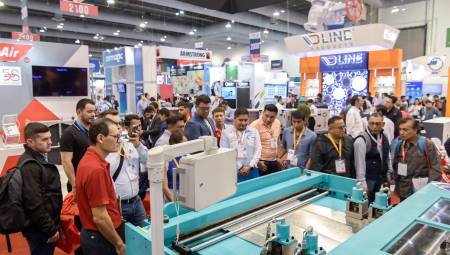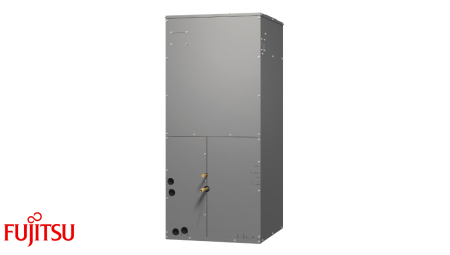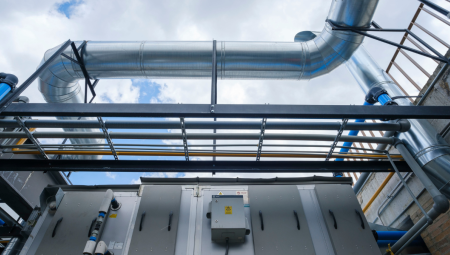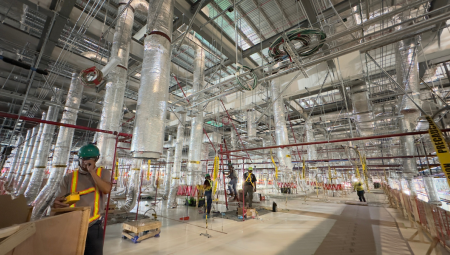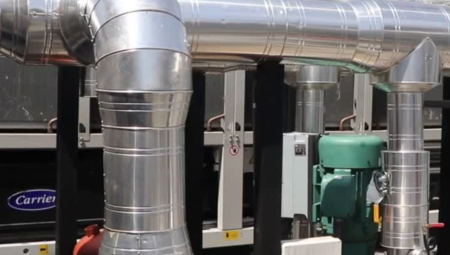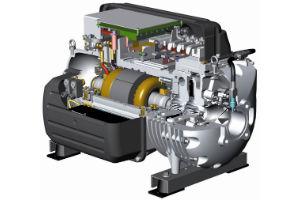 In the air conditioning sector, technological evolution has allowed us to have much more efficient technologies such as those described below.
In the air conditioning sector, technological evolution has allowed us to have much more efficient technologies such as those described below.
by Alfredo Sotolongo*
The most economical energy to produce is the one that is saved!
In this article I want to share with you my experiences with the new trends in efficient designs of air conditioning systems.
After the thermal load of an air conditioning system is determined and the equipment is selected to compensate for the total capacity, the system operates the vast majority of the time at partial loads. Very rarely does it do so at 100% capacity.
For this reason, in the case of chillers, AHRI agreed with all the manufacturers belonging to that institution that they represented the efficiency of the chillers in kW / Ton operating at different capacities that are the following:
- 1% of the time they operate at 100% of the total capacity
- 42% of the time they operate at 75% of the total capacity
- 45% of the time they operate at 50% of the total capacity
- 12% of the time they operate at 25% of the total capacity
This represents, quite close to reality, the behavior of any air conditioning system. There are those who argue that this behavior depends on the geographical area, which is debatable. However, it is used so that under the same circumstances manufacturers publish the average consumption of their chillers represented by the IPLV (Integrated Part Load Value) based on ahRI standard 550/590 and calculated with the following equation: IPLV=0.01A+0.42B+0.45C+0.12C
Where: A=kW/Ton@100%, B=kW/Ton@75%, C=kW/Ton@50% and D=kW/Ton@25%
The most interesting thing is that experience confirms that the vast majority of air conditioning systems operate 90% of the time between 10% and 60% of the total capacity. This leads to popularize the application, among other developments, of variable frequency drives (VFD) with which it is possible to reduce the electrical consumption exponentially to the cube by modulating the mass of the fluids.
As air conditioning systems operate by controlling the following fluids: refrigerant, water and air, it has been possible to adapt the electricity consumption directly proportional to the thermal capacity. This means that the energy consumed is the minimum necessary to compensate for the thermal load at every moment of the system operation.
With the advent of compressors that use magnetic balineras and therefore do not need oil, the following is achieved:
1) Friction on the shaft is non-existent.
2) The current required to start is considerably less than that required to start a centrifugal cooler without magnetic balers of the same capacity.
3) The heat transfer in the exchangers is maximized by the absence of an oil film that affects such heat transfer through the tubes.
With the application of VFDs, the refrigerant mass is controlled by modulating the revolutions of the compressor, adapting the refrigerant mass to the thermal load.
In chillers using this type of compressor, IPLV of around 0.32 kW/Ton has been achieved and especially in the range of between 10% and 60% of the total capacity, consumption of less than 0.29 kW/tonne.
By being able to modulate the refrigerant mass, it allows the water mass to also be modulated through the evaporator and possibly also through the condenser. In the condenser it depends on changes in the temperature of the water entering the condenser, which is subject to changes in the moist bulb of the air entering the cooling tower.
The body of water in the evaporator is most effectively modulated using water pumps with integrated variable frequency drives that do not need pressure sensors, as they react to a pre-programmed algorithm. This algorithm compares the revolutions and electrical consumption of the motor to move the body of water and the pressure needed to supply the air handling units in the different zones.
In the air handling units, two-way valves are located that modulate the body of water that passes through the cooling coils to meet the thermal load of the areas served by these units. At the same time, the VFDs that modulate the air mass supplied by this unit are subject to the air mass that modulates the variable volume air diffusers located in each area.
The two recent developments that have contributed to completing the cycle of modulating the mass of fluids in air conditioning systems are variable volume refrigerant compressors using oil-free magnetic balineras and vertical pumps in line with integrated variable frequency drives (VFDs) without pressure sensors.
1. The most recent development is the integration of all cold water plant controls, where a central control acts as an orchestra conductor maximizing the operation of all components: chillers, water pumps and cooling towers.
It is fascinating to see how using a previously programmed algorithm, all the components of a cold water plant react based on the commands of the central control, orchestra conductor, making each component operate optimally and thus achieve that the entire plant reaches extremely low consumption, something never experienced before.
If you need more information on any of the topics covered in this column, please contact me at the email [email protected]
* President of Protec, Inc., is certified as a professional engineer in Puerto Rico and the state of Florida; has more than 40 years of experience in the application and sale of systems and equipment for energy conservation. He is a member of ASME (American Society of Mechanical Engineers), AEE (Association of Energy Engineers), ASHRAE and was president of the Miami chapter of that association.







